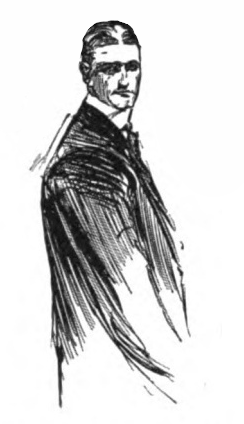Carnacki
| Thomas Carnacki | |
|---|---|

A portrait by Florence Briscoe from the title logo that accompanied the first five Carnacki stories in The Idler, 1910.
|
|
| First appearance | The Gateway of the Monster (1910) |
| Created by | William Hope Hodgson |
| Portrayed by |
Donald Pleasence Dan Starkey |
| Information | |
| Gender | Male |
| Occupation | Occult detective |
| Nationality | English |
Thomas Carnacki is a fictional occult detective created by English fantasy writer William Hope Hodgson. Carnacki was the protagonist of a series of six short stories published between 1910 and 1912 in The Idler magazine and The New Magazine.
These stories were printed together as Carnacki, the Ghost-Finder in 1913. A 1948 Arkham House edition of Carnacki, the Ghost-Finder edited by August Derleth added three stories: "The Haunted Jarvee", published posthumously in The Premier Magazine in 1929; "The Hog", published in Weird Tales in 1947; and "The Find", a previously unpublished story.
The stories are inspired by the tradition of fictional detectives such as Sherlock Holmes. Carnacki lives in a bachelor flat in Cheyne Walk, Chelsea; the stories are told from a first-person perspective by Dodgson, one of Carnacki's four friends, much as Holmes' adventures were told from Watson's point of view. (The other three friends are Jessop, Arkwright and Taylor). Whereas the Holmes stories never made use of the supernatural except as a red herring, this is the central theme of the Carnacki stories, though five of the stories have non-supernatural endings.
The character of Carnacki was inspired in part by Dr. Hesselius, a supernaturally inclined scientist who appeared in short stories by the Irish fantasy writer Sheridan Le Fanu, notably the early and influential vampire story "Carmilla". Carnacki is also highly reminiscent of Algernon Blackwood's John Silence.
The stories are presented using a framework story: Carnacki periodically sends notes of invitation to four friends, asking them to come to dinner and hear his latest tale. One of the men, Dodgson, is the actual narrator of the story, who comprises an extremely minimal part of each Carnacki story. Carnacki forbids discussion of the case in question over dinner. After dinner, Carnacki lights his pipe, everyone settles into their favourite chairs, and he tells the tale without interruption.
...
Wikipedia
